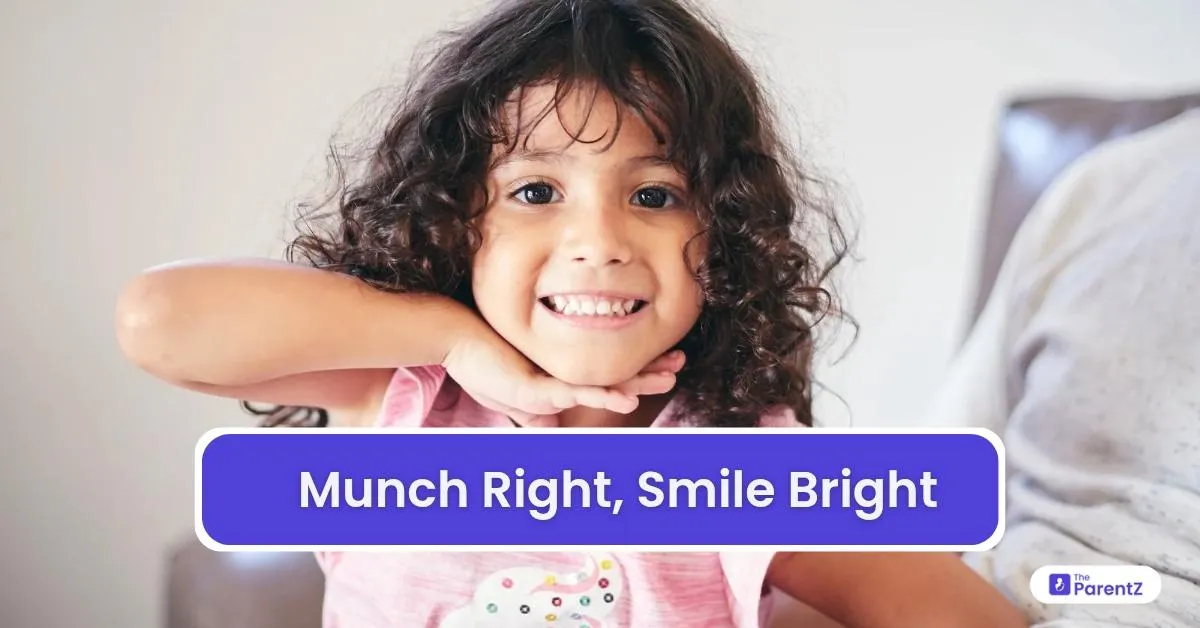If you’re a parent, you probably think about your child’s meals a hundred times a day. Is it nutritious enough? Are they eating too many snacks? Are they drinking enough water? And somewhere in that pile of thoughts, one big worry often hides: Are these foods hurting their teeth?
You’re not alone. Many parents focus on general health and miss the strong connection between food and dental health. But here’s some good news: helping your child eat better for their teeth doesn’t mean cutting out all the fun. It just means making a few smart, easy swaps that protect their smiles and support healthy growth, too.
What Your Child Eats Affects Their Teeth More Than You Think
Every time your child eats or drinks, especially something sugary or sticky, their mouth becomes a little playground for bacteria. These bacteria love sugar, and when they find it, they produce acids that attack tooth enamel. That’s how cavities start.
But it’s not just about sweets. Starchy foods, such as chips and biscuits, can also break down into sugars and adhere to the teeth. On the flip side, there are plenty of foods that actually help clean teeth, strengthen enamel, and boost overall mouth health.
So it’s not about fear, it’s about being food-smart.
Super Snacks That Make Teeth Strong
Let’s start with the good stuff! Here are some foods that are great for your child’s dental health:
Fresh fruits and veggies
Crunchy apples, carrots, cucumbers, and even guavas act like little toothbrushes. They scrub the surface of the teeth and increase saliva, which helps wash away food particles.
Cheese and yogurt
These dairy delights are rich in calcium and phosphates, which strengthen teeth and neutralize acids in the mouth. Bonus: they’re often loved by kids!
Nuts and seeds
If your child is old enough to chew them safely, almonds, sesame seeds, and walnuts offer healthy fats and minerals. They don’t stick to the teeth, and they keep mouths happy.
Whole grains
Brown rice, oats, and whole wheat rotis are better choices than refined options. They don’t break down into sugar as quickly and offer fiber that supports digestion, too.
Water
It might seem simple, but water is the real hero. Rinsing the mouth after snacks helps clean away sugar and acids. Fluoridated water (if available in your area) also protects enamel.
Sneaky Snacks That Can Harm
It’s not about banning foods forever, but knowing which ones should be limited or eaten with extra care:
Sticky candies and toffees
These cling to teeth and feed bacteria for hours, even after brushing. If your child has a sweet treat, try to give it with a meal, when saliva flow is higher.
Packaged juices and soft drinks
Even when they say “100% fruit,” these drinks are packed with natural and added sugars. Sipping on them slowly throughout the day is one of the worst habits for teeth.
Cookies, chips, and white bread
These starchy snacks can turn into sugar and tend to get stuck in small tooth grooves. If eaten, it is helpful to follow up with water and brush your teeth soon after.
Flavored yogurts
While plain yogurt is excellent, the flavored ones can contain more sugar than a soft drink. Always check labels and opt for low-sugar options whenever possible.
Make Mealtimes Mouth-Friendly
Building healthy habits around food doesn’t have to be a battle. In fact, with a few small changes, your daily routine can start doing the hard work for you.
Create regular snack times
Frequent snacking means the mouth doesn’t get time to recover. Try to stick to 2–3 structured snack times and avoid constant grazing throughout the day.
Encourage water after every meal
It’s one of the simplest habits to teach. After eating, hand your child a glass of water. It helps clear sugars and acids, keeping the mouth fresh.
Save sweets for right after meals
If your child is going to have something sugary, it’s best to give it right after lunch or dinner. The mouth is already producing saliva, and brushing may follow soon after.
Make tooth-friendly lunchboxes
Instead of sugary biscuits and fruit rolls, pack cubes of cheese, veggie sticks, fresh fruits, and whole grain crackers. Add a small bottle of water instead of juice.
Teach Kids the “Tooth Check” Trick
Here’s a fun activity! Ask your child to do a “tooth check” after every snack.
- “Is anything stuck in my teeth?”
- “Does my mouth feel dry or sticky?”
- “What would help clean it up?”
It builds awareness and makes them part of the decision-making. You can even use a small mirror for the check. Over time, they’ll start noticing which foods feel clean and which feel sticky, and that’s a powerful lesson.
Make Food Education Fun
Kids love learning when it feels like play. Here are a few ways to make healthy eating exciting:
Story time with Super Foods
Invent characters like “Captain Carrot” or “Dairy Defender” who fight off the “Cavity Creatures.” Tell mini bedtime stories that sneak in tooth lessons.
Create a snack station.
Let your child help you prepare healthy snacks in small boxes or jars. Add fun labels like “Tooth Ticklers” (carrots), “Smile Squares” (cheese cubes), or “Happy Crunch” (apple slices).
Use color and shape
Cut fruits and veggies into stars, hearts, or animals using cookie cutters. Bright, fun shapes attract little hands and hungry smiles.
Don’t Be Too Strict
Sometimes, your child will want chocolate cake at a party. And that’s okay. Denying all treats can make kids crave them more. The goal is balance, not perfection. One sweet now and then won’t ruin their teeth, but a habit of poor food choices will.
Celebrate the small wins. If your child chooses water over soda one day, or says no to a lollipop, that’s a big step. Praise them warmly.
A Quick Word About Baby Teeth
It’s easy to think baby teeth don’t matter since they fall out anyway. But they really do. Decayed baby teeth can hurt, cause infections, and make chewing difficult. Worse, cavities in baby teeth can raise the risk of cavities in adult teeth, too.
Healthy baby teeth mean a healthy smile for life, and food plays a massive role in that.
Wrapping It Up with a Smile
Feeding your child for dental health isn’t about complicated diets or forcing them to eat green things they hate. It’s about small shifts, smart swaps, and playful learning.
By choosing foods that nourish their growing teeth, encouraging water and healthy snacks, and teaching them to notice how food affects their mouth, you’re giving them more than just a meal. You’re giving them a smile that lasts a lifetime.
So next time you’re packing a tiffin or offering an after-school snack, remember:
Munch right, and that bright smile will shine even brighter!








Be the first one to comment on this story.